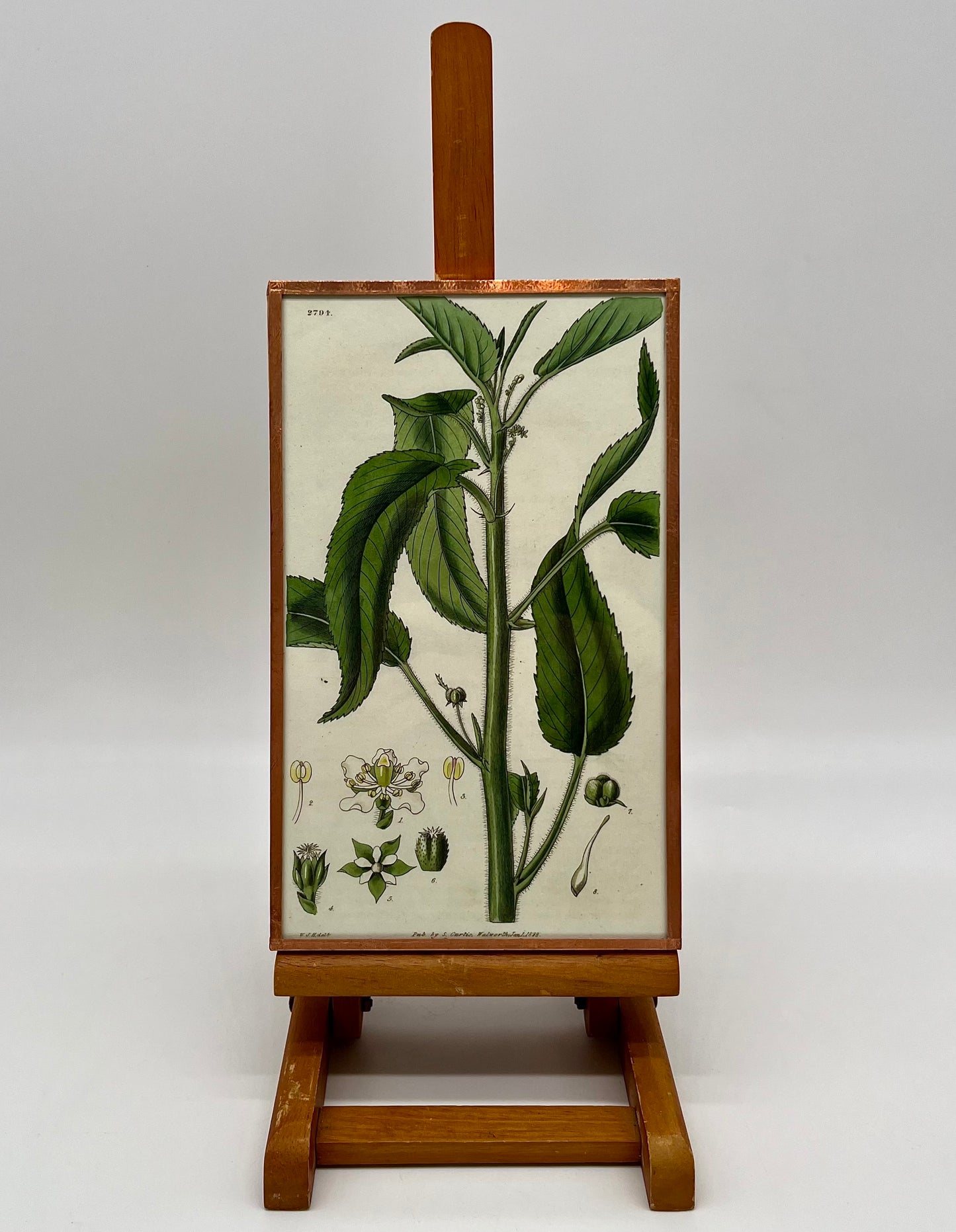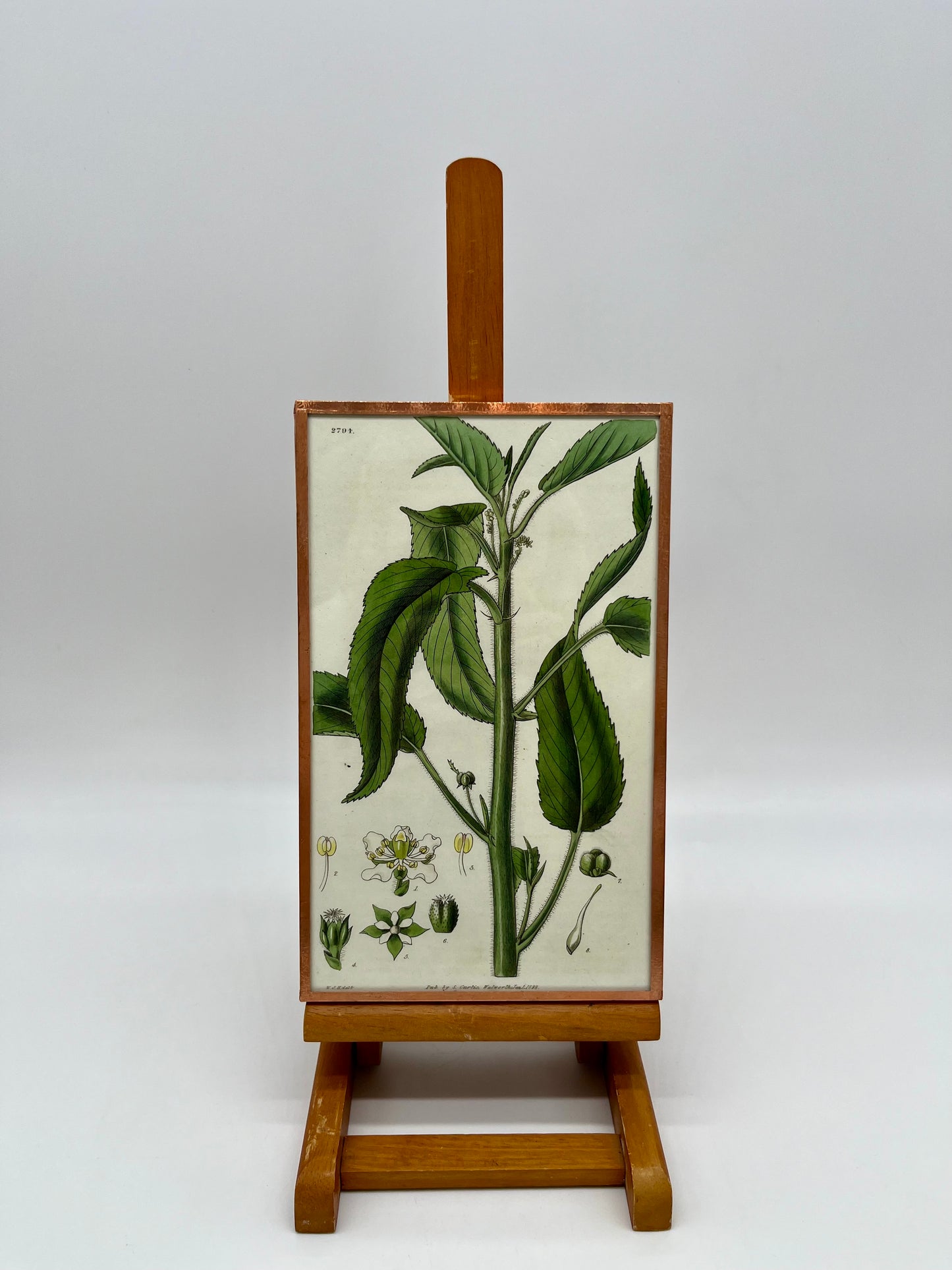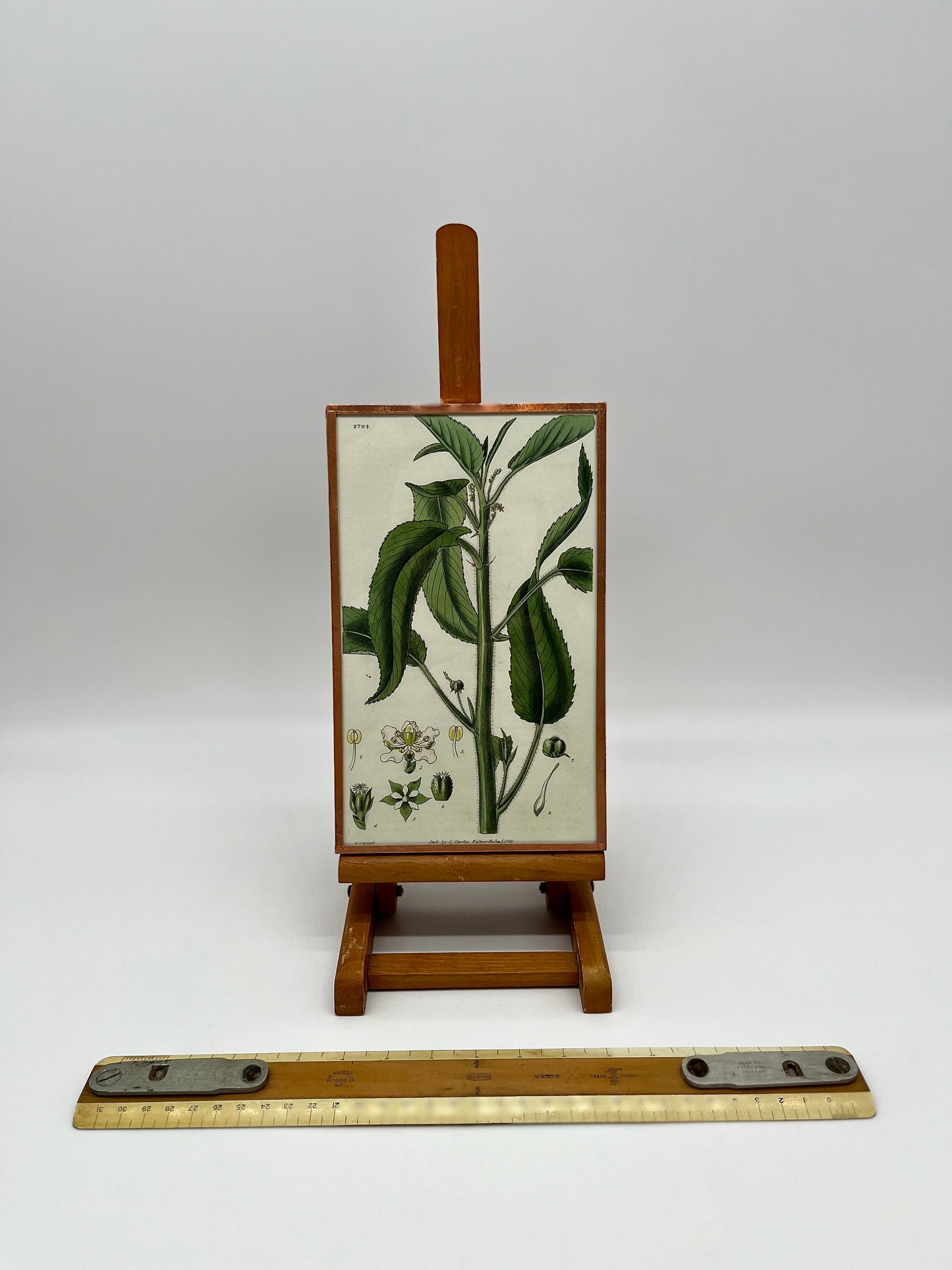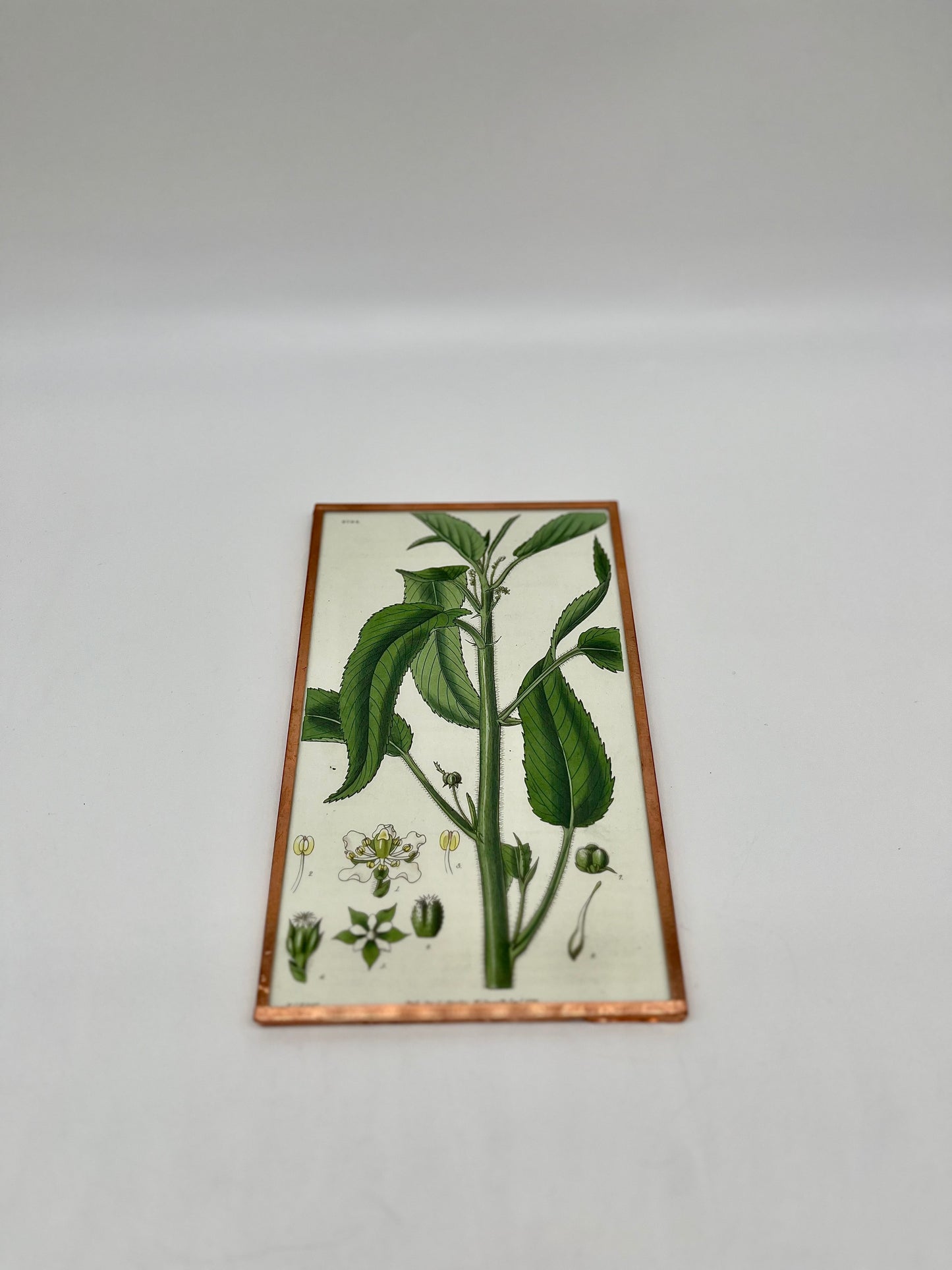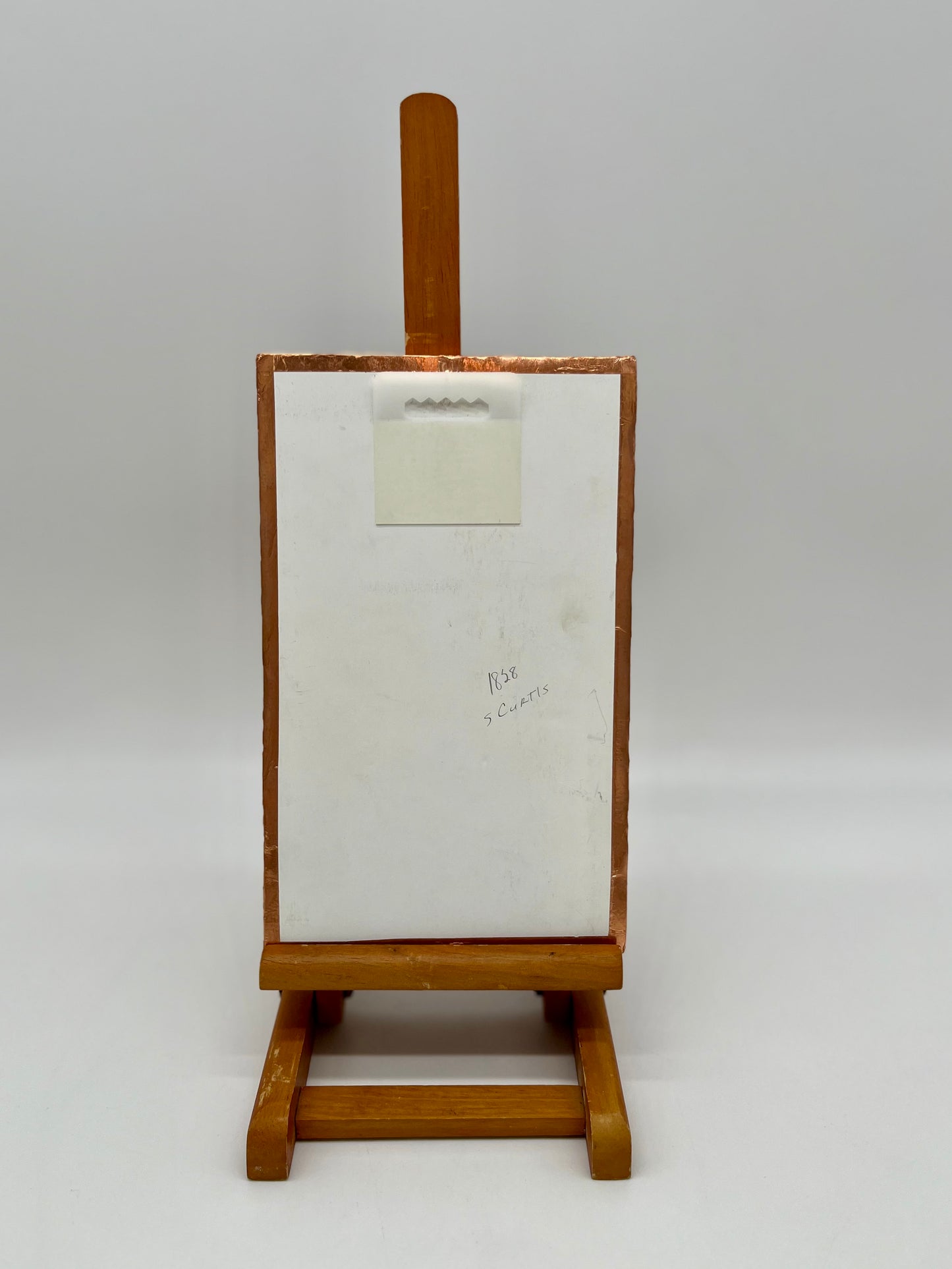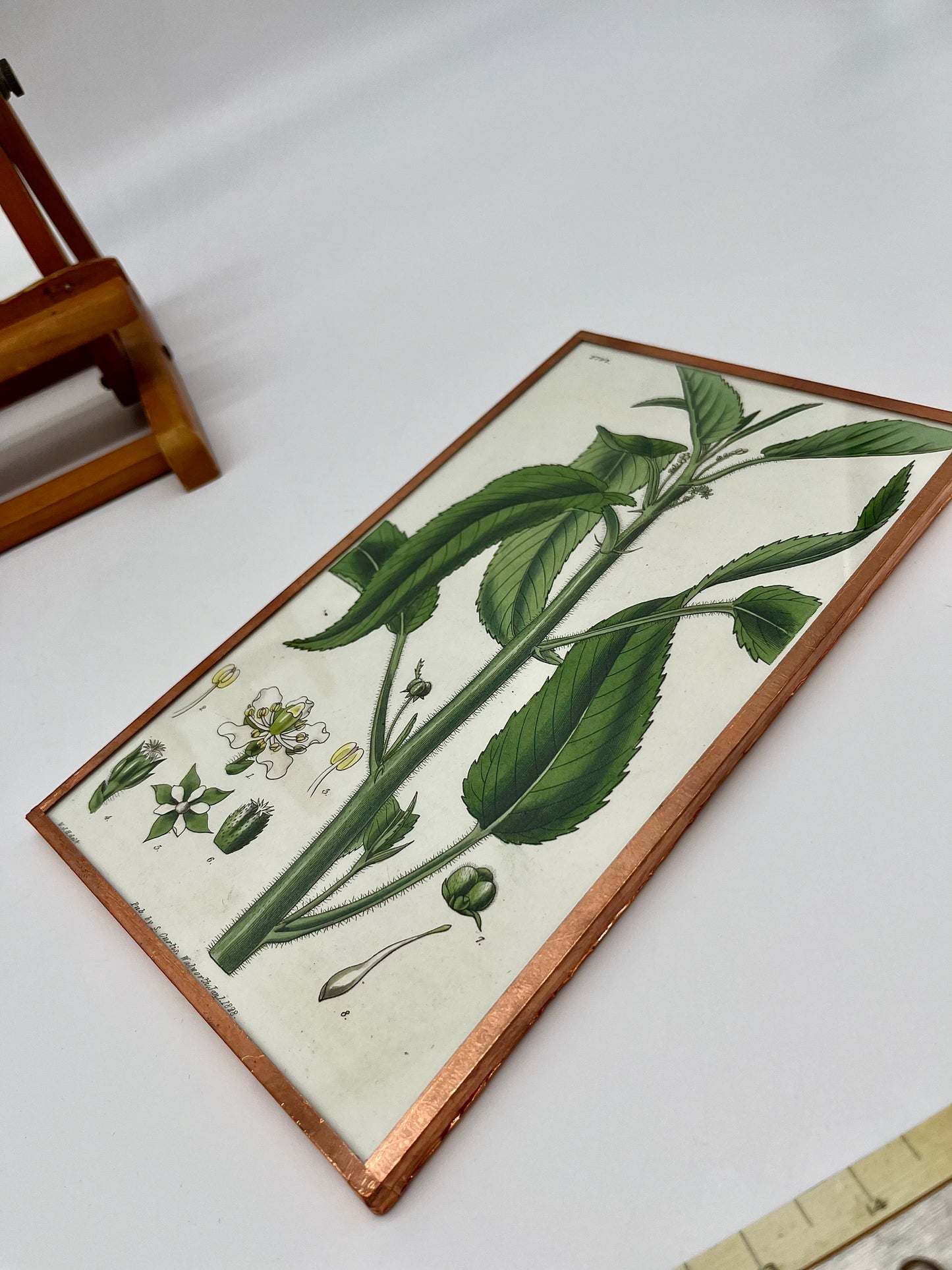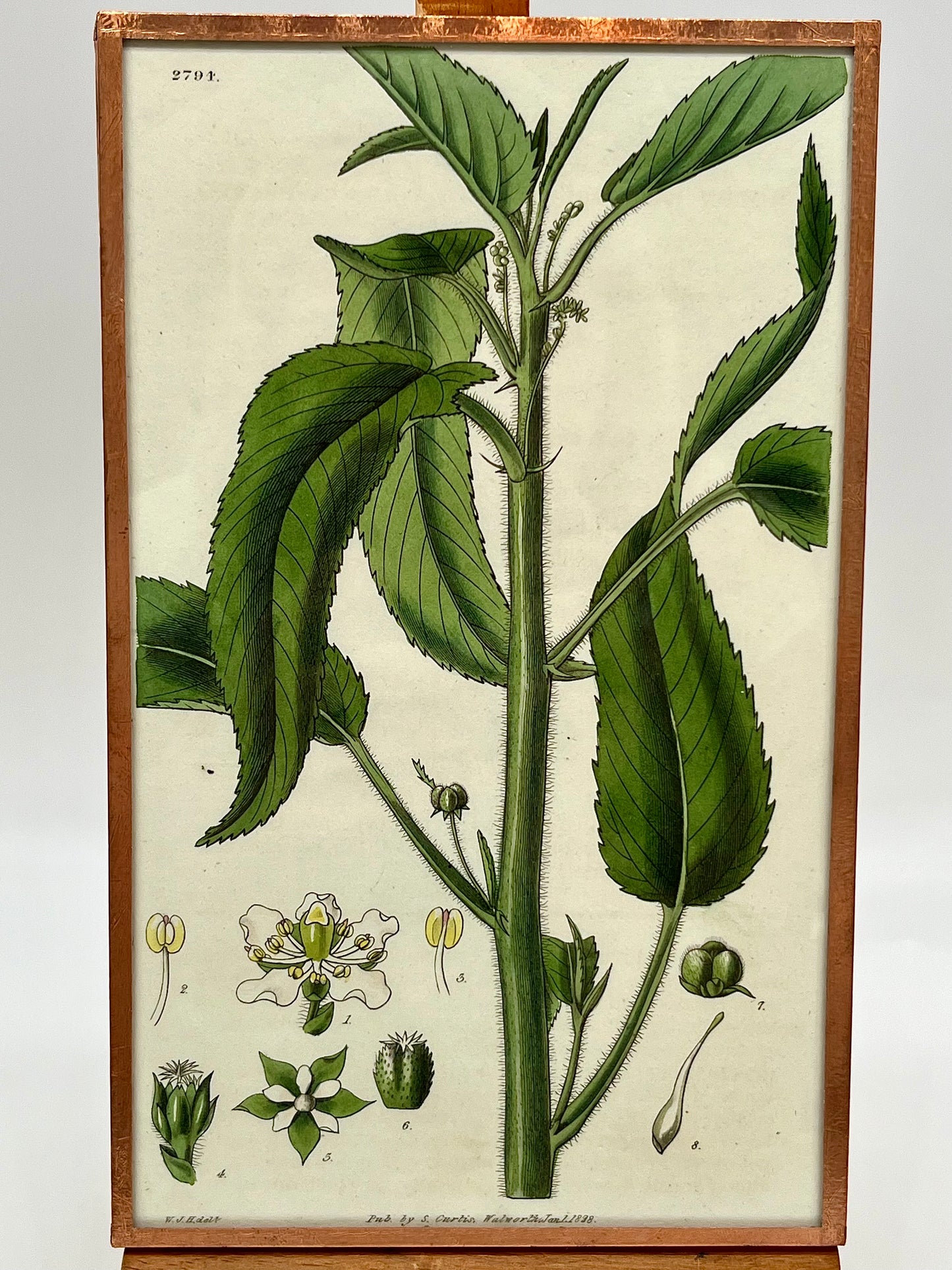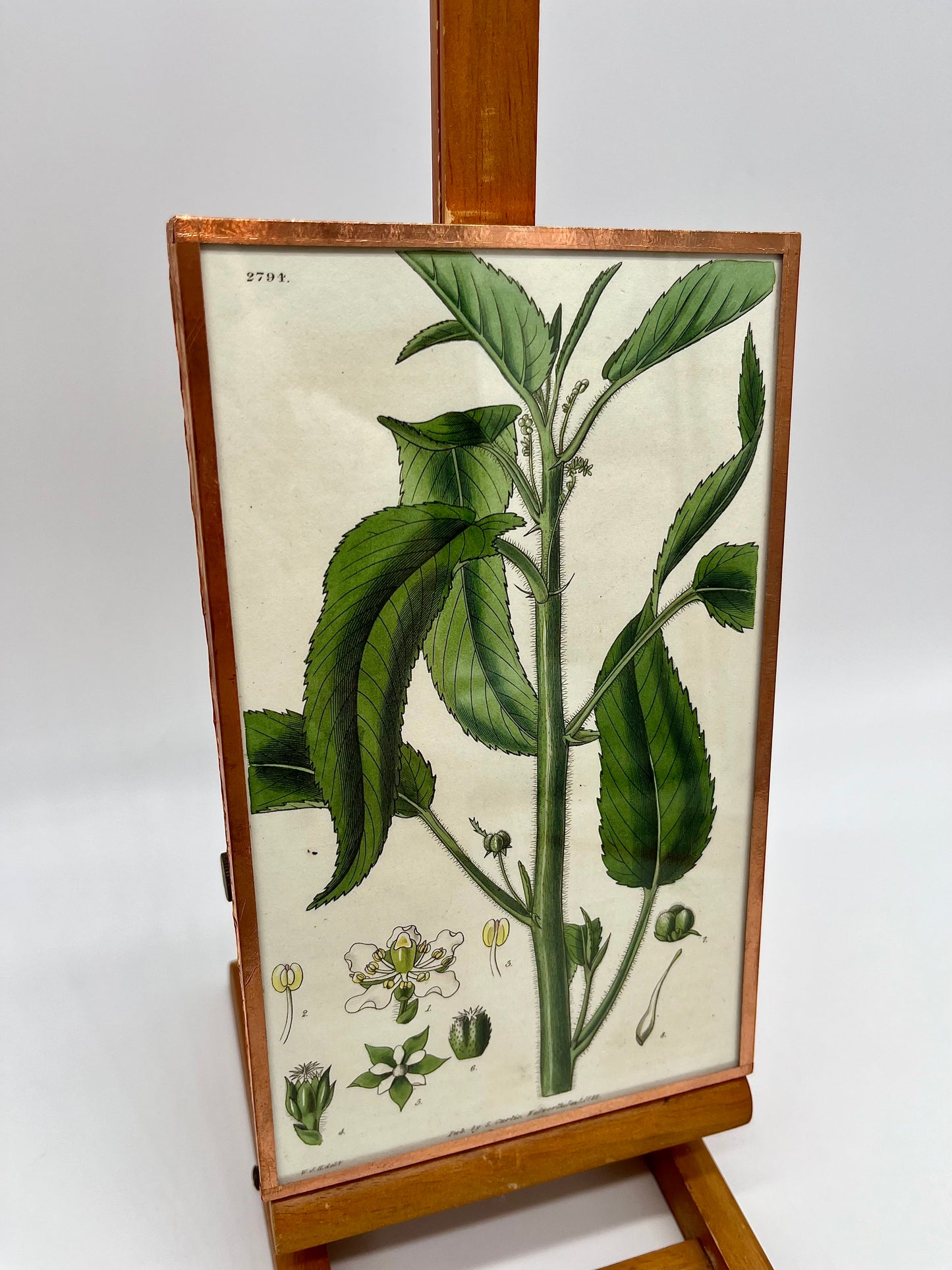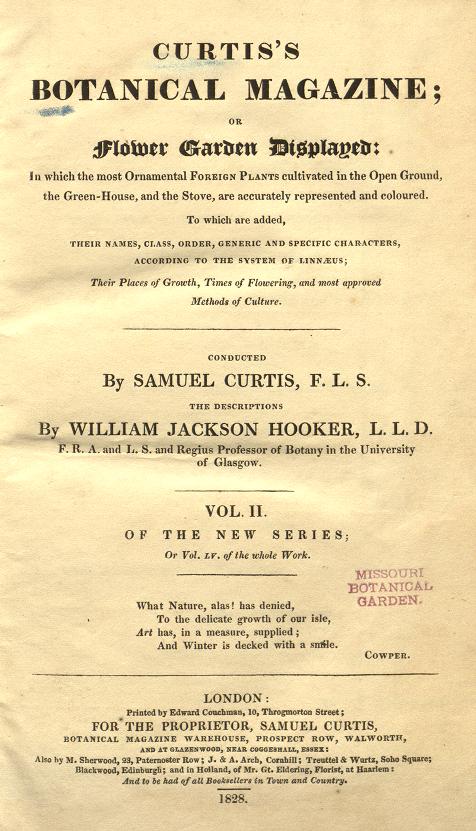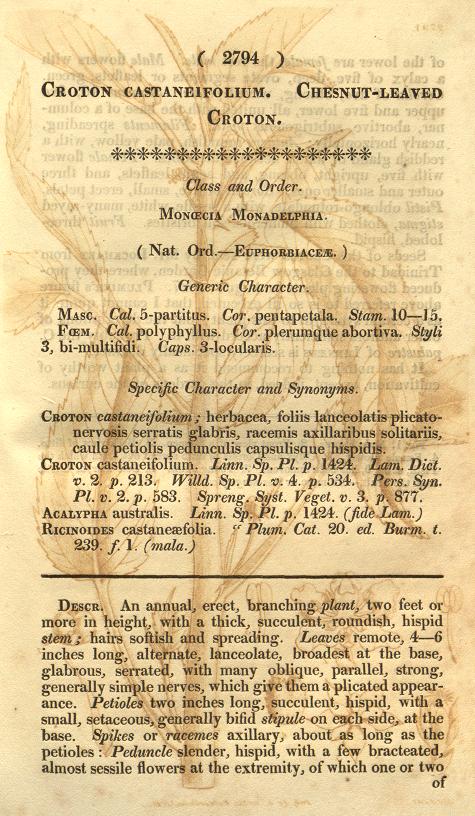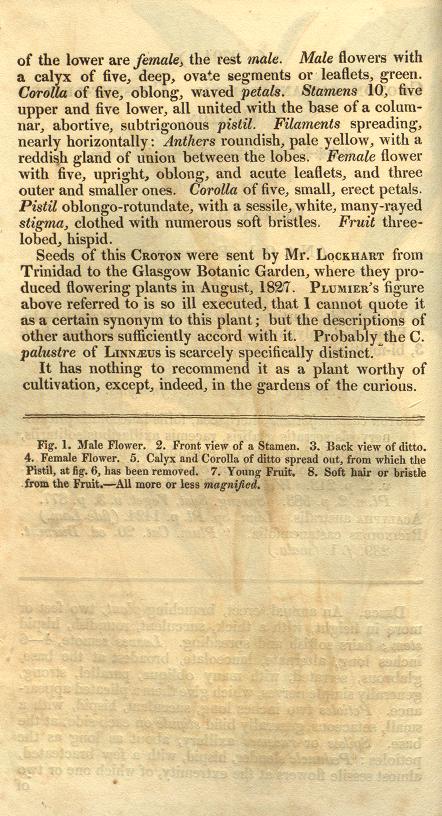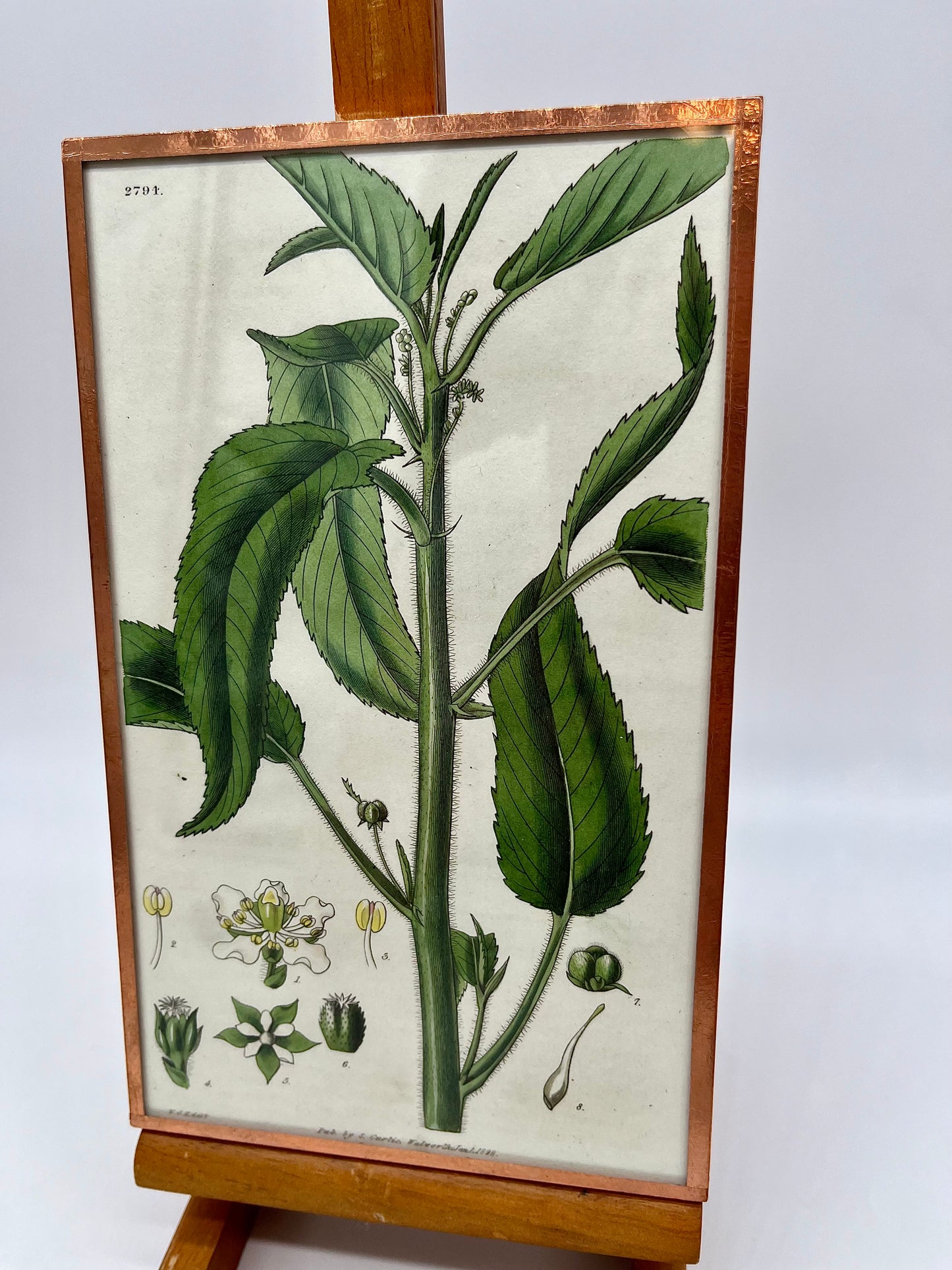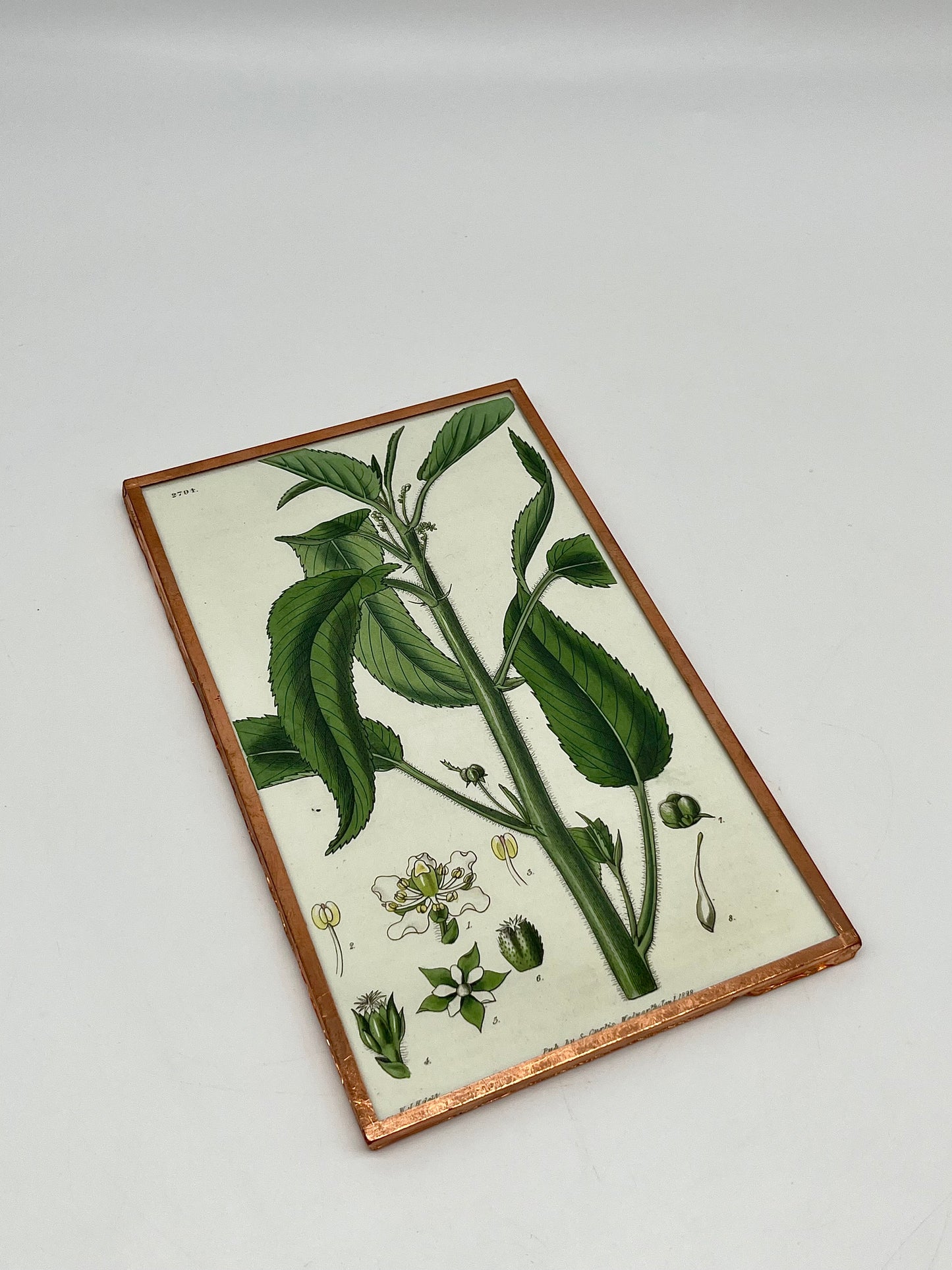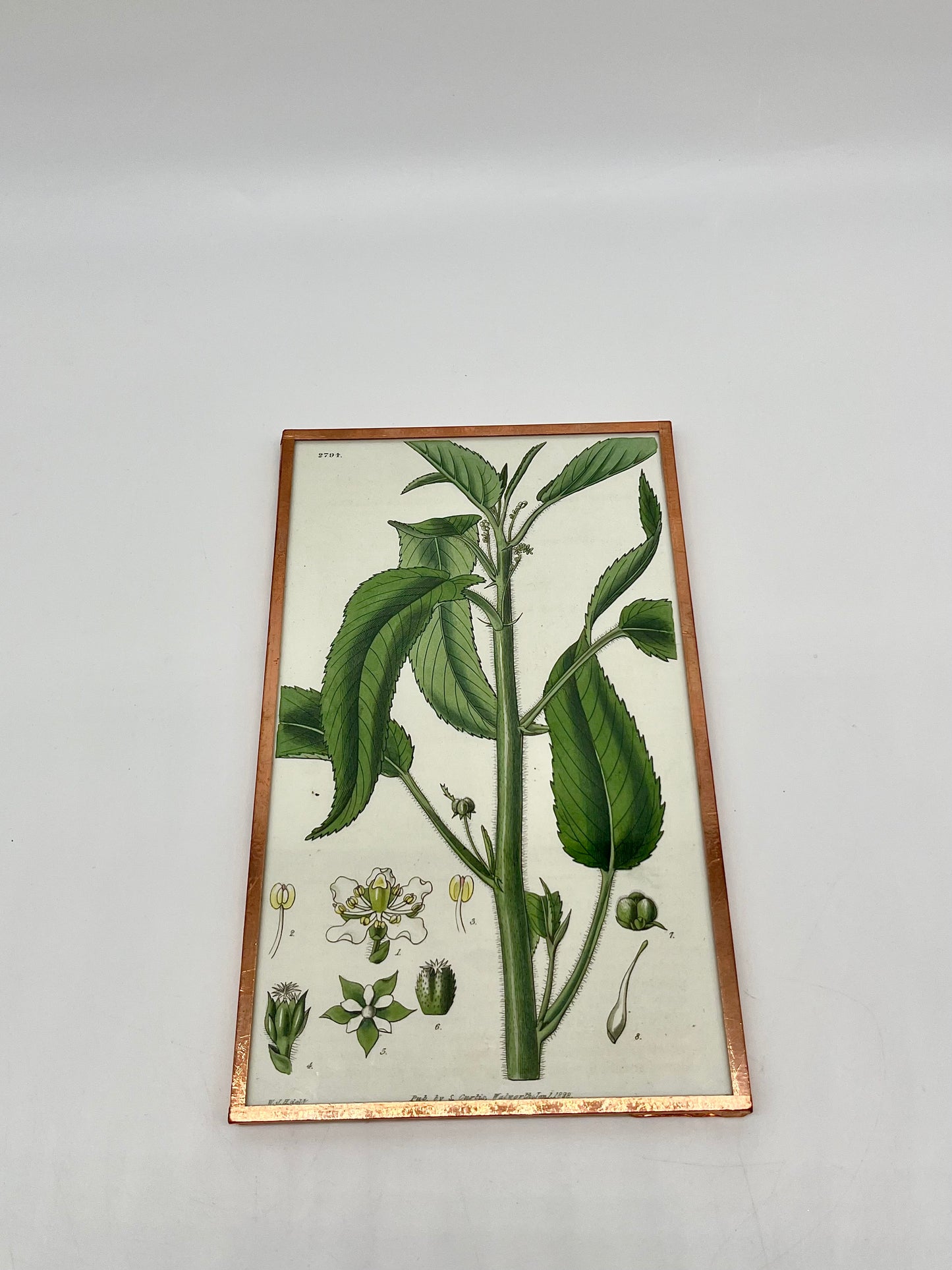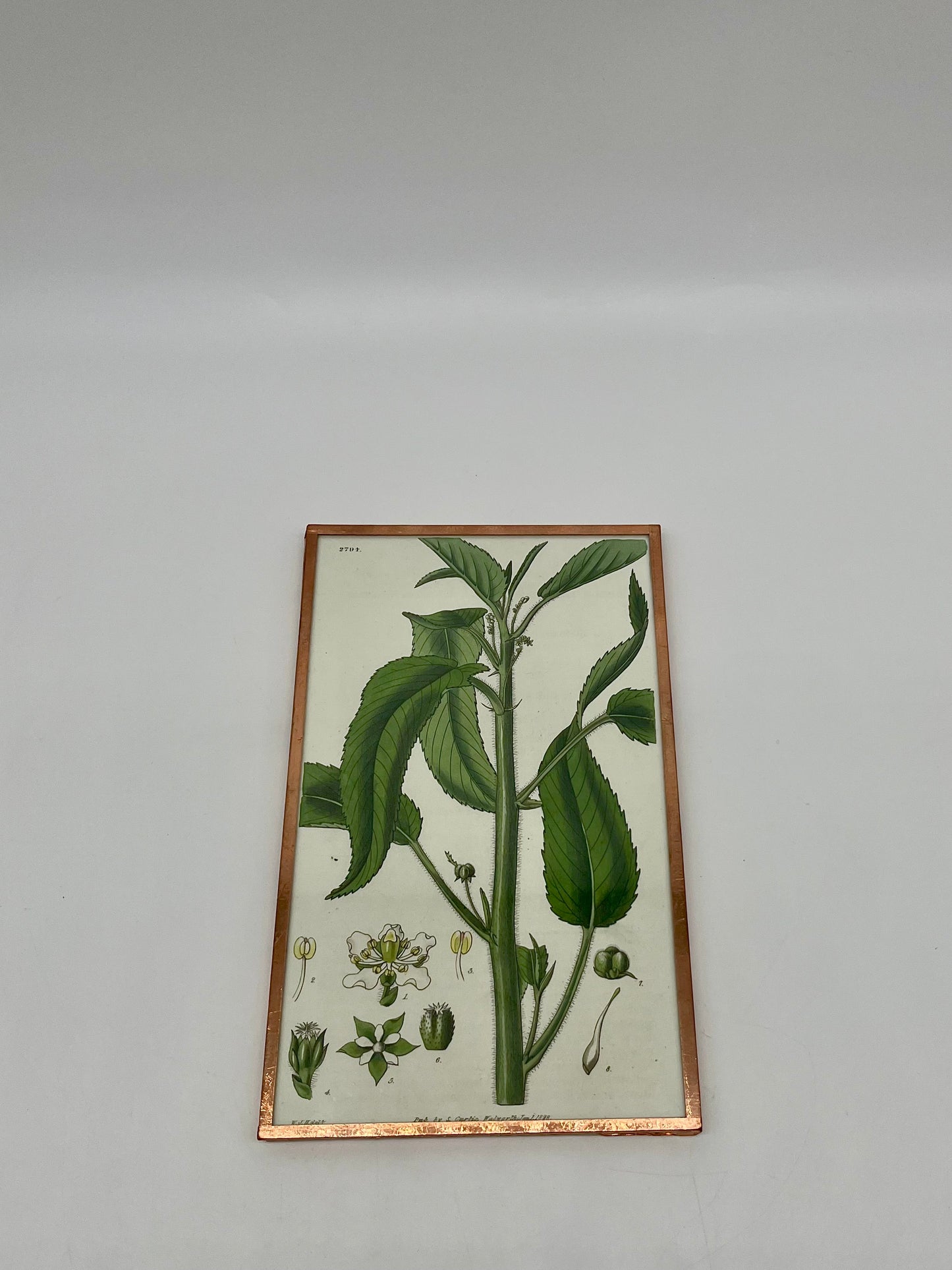Taylor Haus Galleries
Croton à feuilles de châtaignier gravé à la main par S. Curtis en 1828
Croton à feuilles de châtaignier gravé à la main par S. Curtis en 1828
Impossible de charger la disponibilité du service de retrait
Croton à feuilles de châtaignier, imprimé en couleur, encadré, par Samuel Curtis. Publié en 1828, dans le cadre du « Botanical Magazine » de Curtis. Cette fantastique estampe de fabrication écossaise a presque 200 ans et représente méticuleusement chaque détail d'un Croton Casteneifolium via une gravure sur cuivre complexe avec un travail de détail original de coloration à la main. Titre : « Croton Casteneifolium, Croton à feuilles de châtaignier » (Planche 2794). Présenté dans un joli cadre en cuivre personnalisé adapté au thème.
Description originale de William Jackson Hooker, LLD (FRA & IS & Regius Professor of Botany à l'Université de Glasgow) : Classe et ordre : Monaecia Monadelphia.
"Une plante annuelle dressée et ramifiée, de deux pieds ou plus de hauteur, avec une tige épaisse, succulente, arrondie et hispide ; poils mous et étalés. Feuilles éloignées, de 4 à 6 pouces de long, alternes, lacéolées , plus larges à la base, glabres, dentelées, avec de nombreux nerfs obliques, parallèles, forts, généralement simples, qui leur donnent un aspect liquéfié. Pétioles de deux pouces de long, succulents, hispides, avec une petite stipule sétacée, généralement bifide de chaque côté, à la base. Épis ou grappes axillaires, à peu près aussi longs que les pétioles ; Pédoncule mince, hispide, avec quelques fleurs bractéées, presque sessiles à l'extrémité. dont une ou deux des inférieures sont femelles, et le reste mâle. Fleurs mâles avec un calice de segments ou de folioles vivants, profonds et ovales, verts. Corolle de cinq pétales oblongs et ondulés. Étamines 10, cinq supérieures et cinq inférieures, toutes unies à la base d'une colonne, pistil avorté, subtrigé. Filets étalés, presque horizontalement : anthères arrondies, jaune pâle, avec une jonction rougeâtre entre les lobes. Fleur femelle à cinq folioles dressées, oblongues et aiguës, et trois externes plus petites. Corolle de pétales petits et dressés. Pistil oblongo-rotunde, à stigmate sessile, blanc, à nombreux rayons, revêtu de nombreuses soies souples. Fruit trilobé, hispide.
Des graines de ce croton furent envoyées de Trinidad à M. Lockhart au jardin botanique de Glasgow, où elles produisirent des plantes en fleurs en août 1827. La figure de Plumier mentionnée ci-dessus est si mal exécutée que je ne peux la citer comme synonyme certain de cette plante ; mais les descriptions d'autres auteurs s'y accordent suffisamment. Il est probable que le C palustre de LINNAEUS n'est guère spécifiquement distinct.
Rien ne la recommande comme plante digne d'être cultivée, sauf bien sûr dans les jardins des curieux.
Dimensions : 8,50" x 5,25"
Poids : 6,5 oz.
